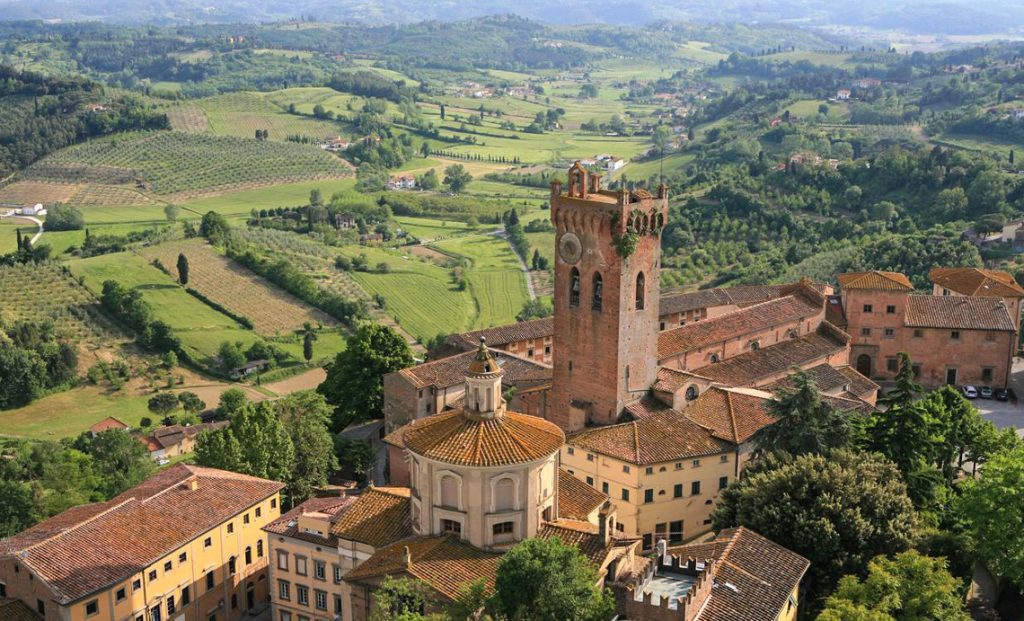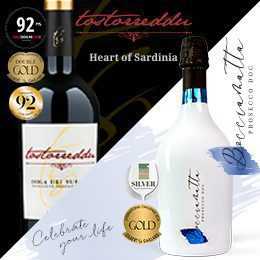This small town between Florence and Siena, world famous for its architecture characterized by numerous medieval towers and also known as the Manhattan of the Middle Ages, is an absolutely essential part of any visit to Tuscany. Of the ancient 72 towers, remain only 13, but despite that, the view of its skyline on the hill is a unique emotion.
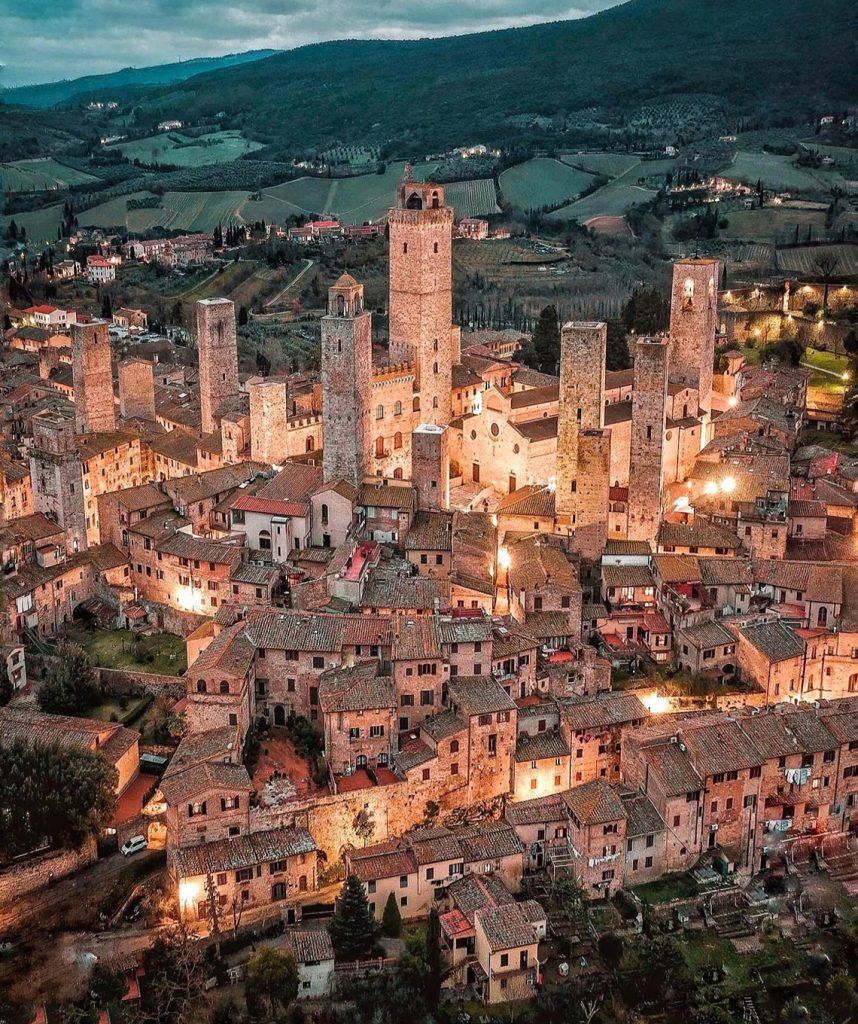
Declared a UNESCO World Heritage Site in 1990, the village of San Gimignano has remained almost intact from the 1300’s until today. The beauty of the architecture, the extraordinary landscapes together with the relaxing atmosphere that you breathe, make San Gimignano one of the most visited places in Tuscany even by the Tuscans themselves.
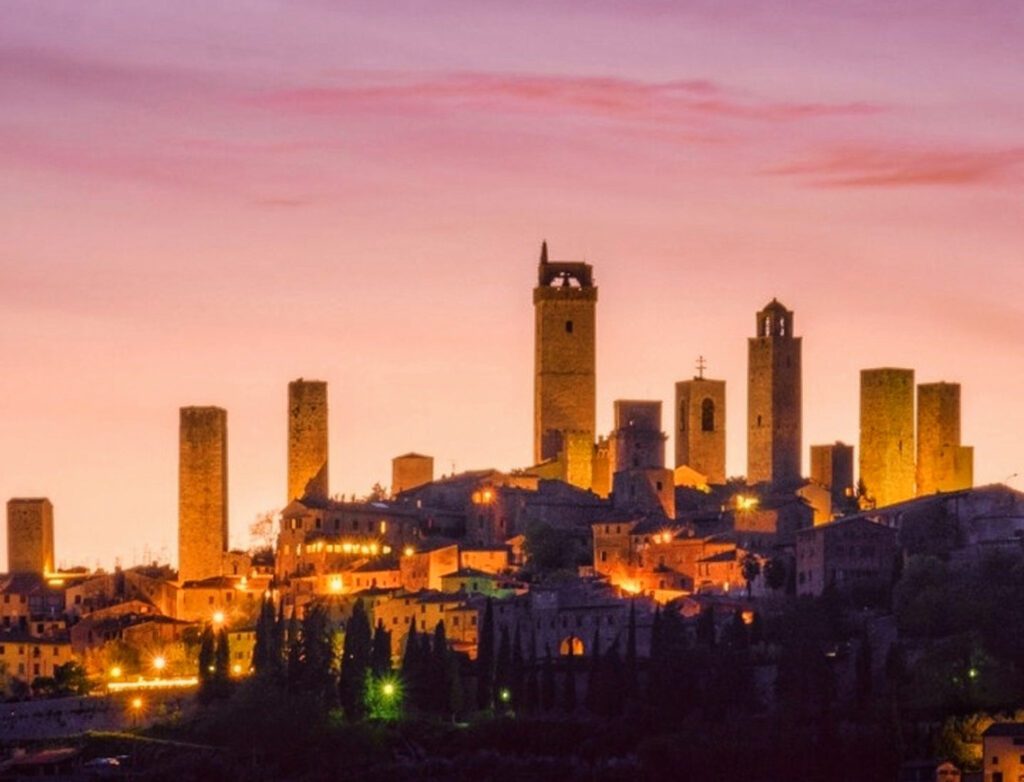
Cherry on top: the village is completely pedestrian, so can you enjoy a totally carefree experience. The advice is to visit it calmly strolling through its streets and squares savoring some of its typical local products. Saffron dishes and the white wine called Vernaccia di San Gimignano are a must.
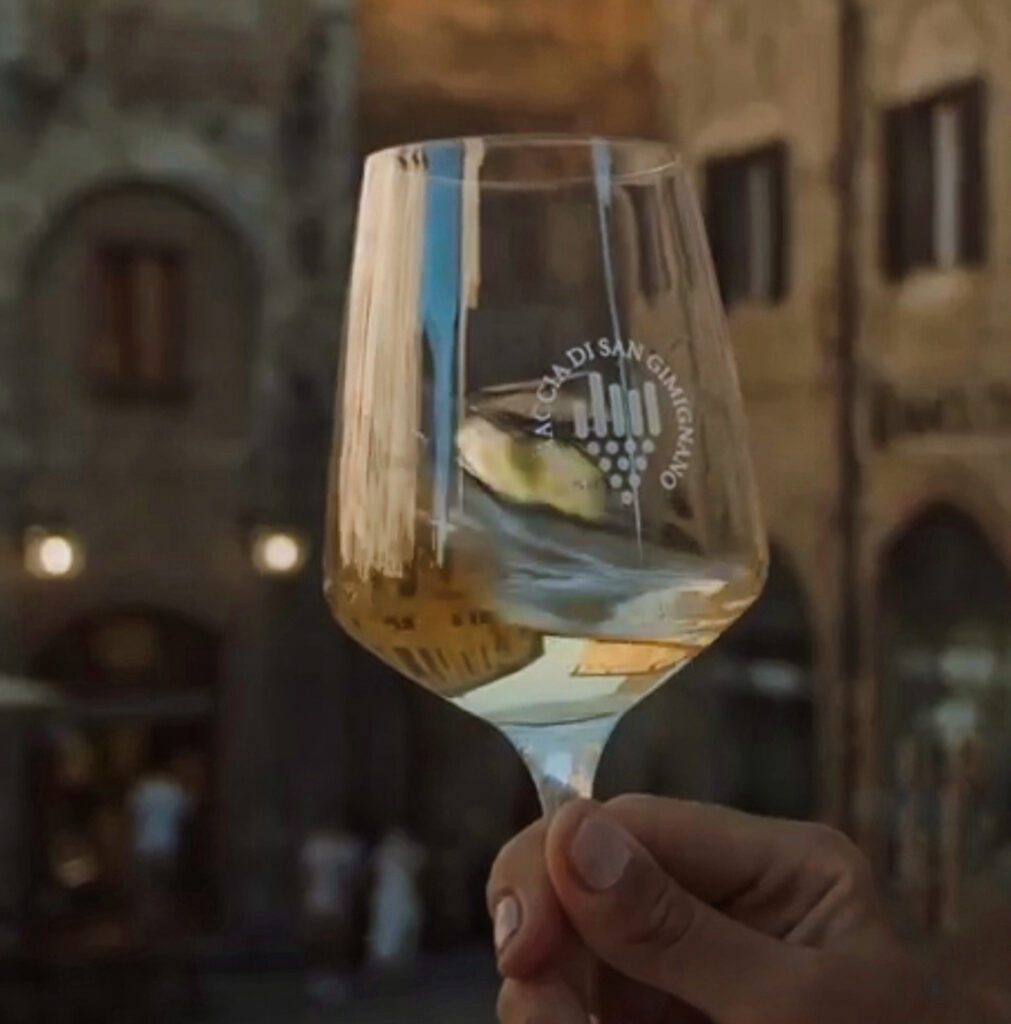
What to see and do in San Gimignano
The city walls of San Gimignano
The village of San Gimignano is still within the remains of its ancient walls, from which five gates open to give access to the town: Porta San Giovanni, Porta Quercecchio, Porta San Matteo, Porta San Jacopo and Porta delle Fonti.
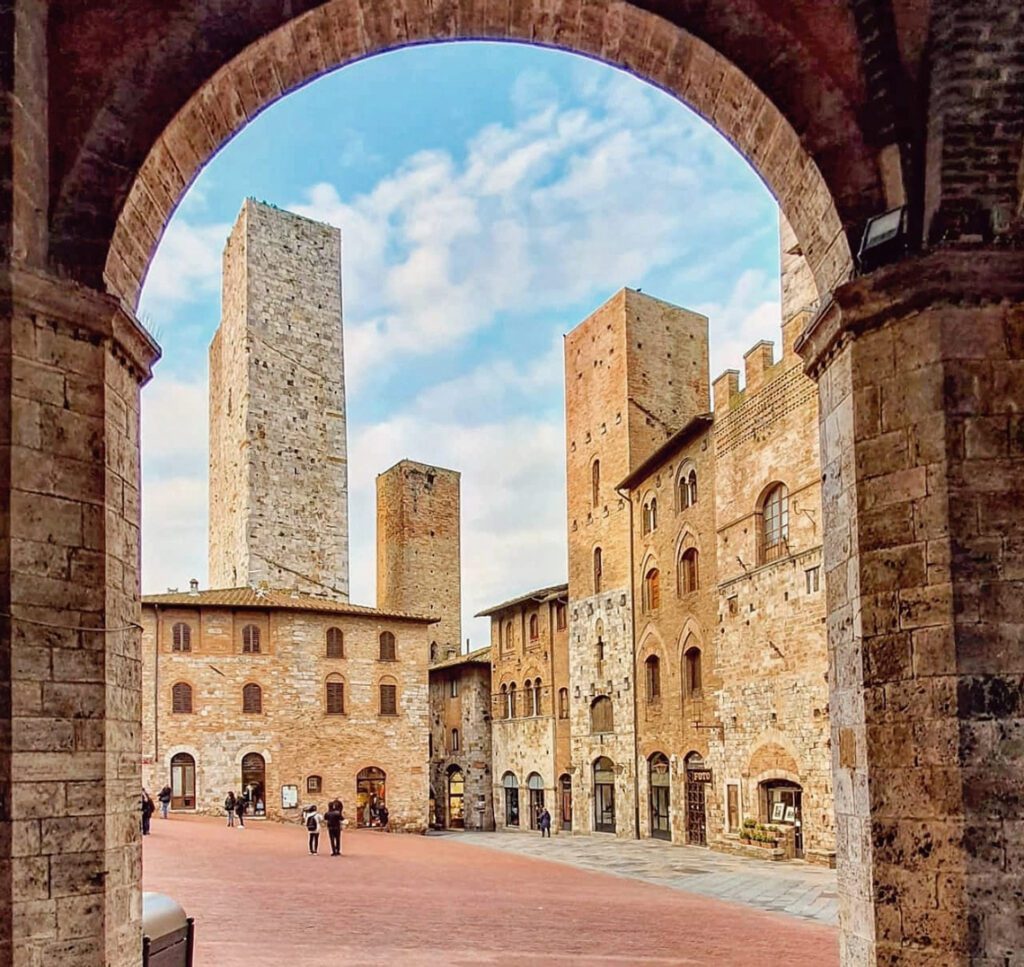
You can take a walk around the walls that surround the historic center for a length of about 2.176 meters, admiring a beautiful view over the Val d’Elsa. The walls of the village seem to have been built at different times, the first track dates back to the end of the tenth century, while the second track dates back to the twelfth century.
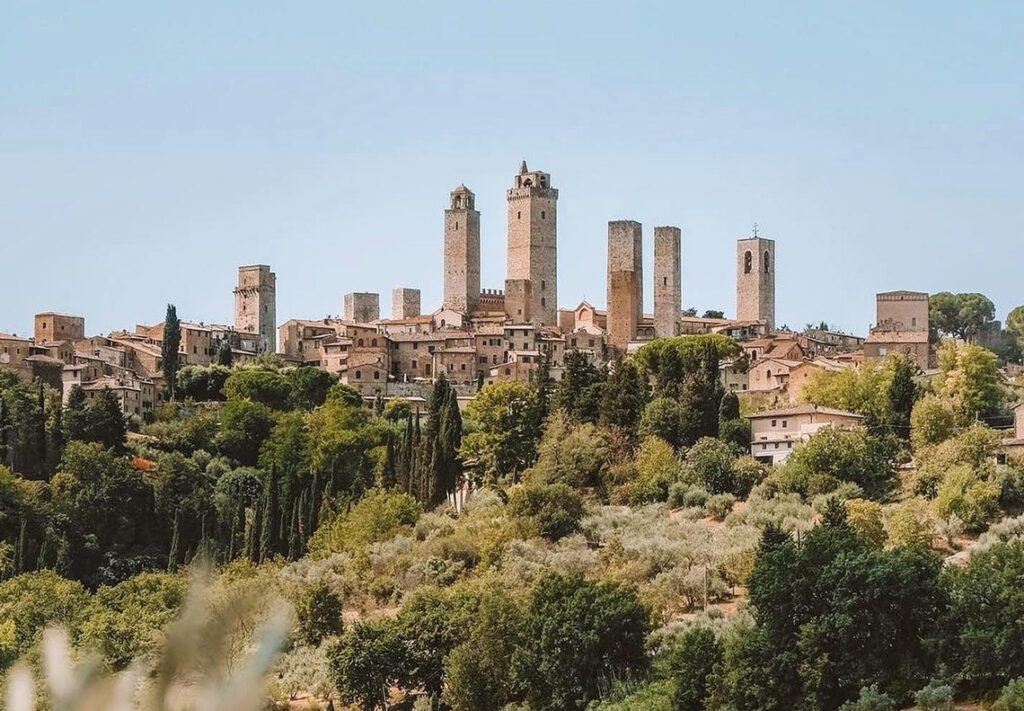
Walking along San Giovanni street
As soon as I entered the city from Porta San Giovanni I felt enchanted by the liveliness of the street: the shops with local products and colourful ceramics, bars, restaurants that populate this famous street give a warm welcome to visitors.
Walking along Via San Giovanni you will pass by the magnificent white facade of the Chiesa di San Francesco, one of the main axes of San Gimignano, set on the Via Francigena where the hospital of the Knights of Malta once stood.
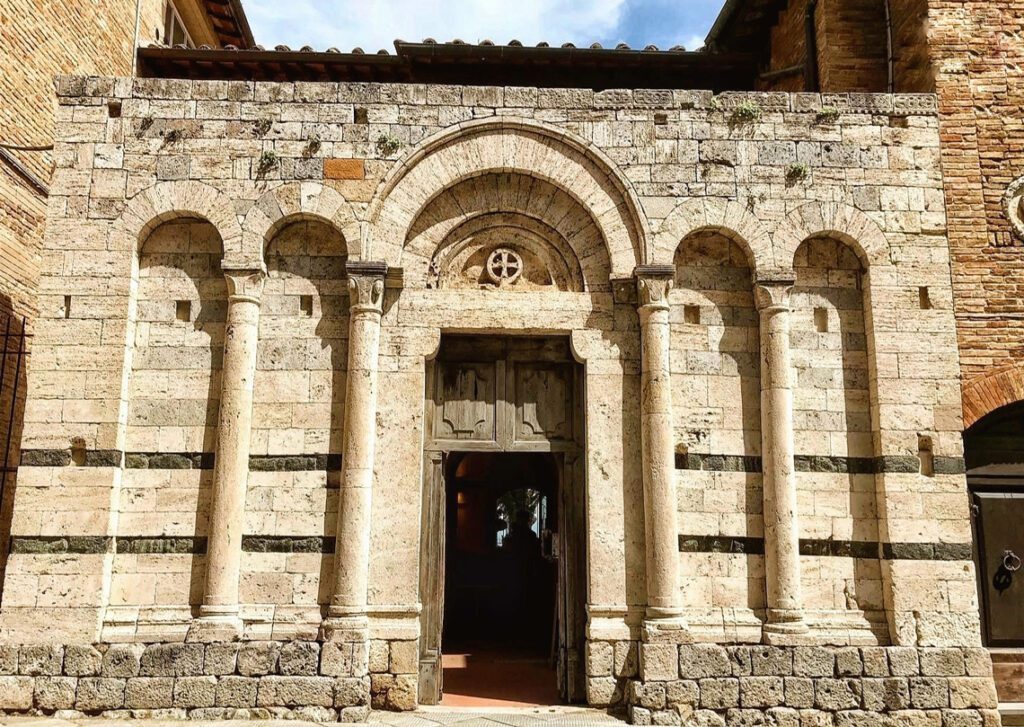
Originally the structure was dedicated to San Giovanni and served also as a shelter for pilgrims and travelers along the Via Francigena. The travertine facade in Romanesque-Pisan style with blind arches on columns is still that of the thirteenth century, you can notice the Cross of the Knights of Malta high up on the portal.
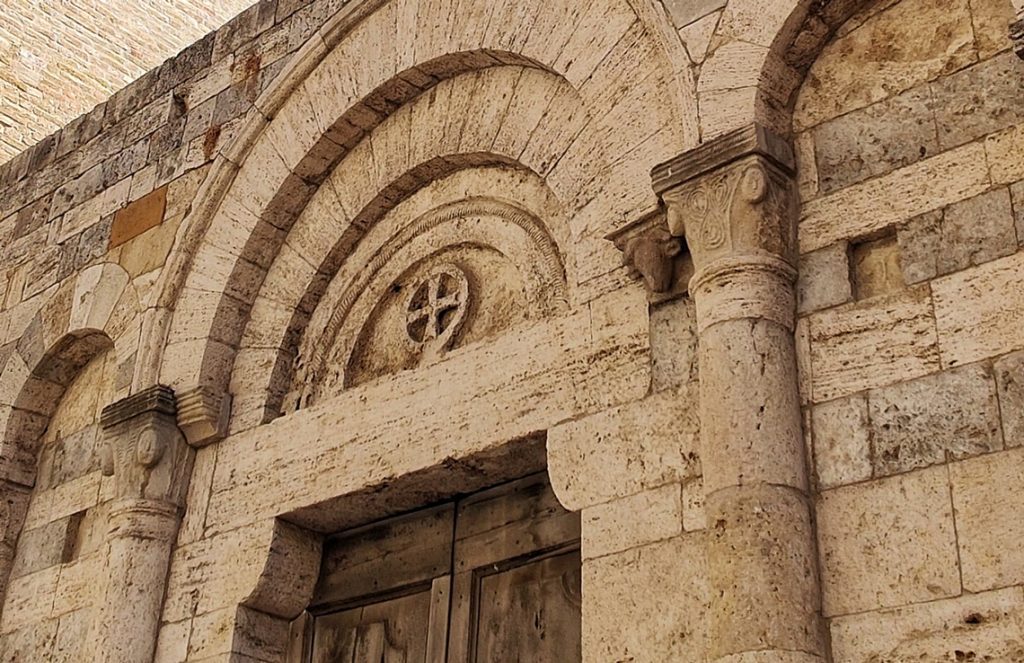
Admire the Cisterna Square
After following Via San Giovanni, passing beneath the Arco dei Becci, you will reach the most characteristic square of San Gimignano – Piazza della Cisterna – where was taking place fairs, public performances, festivals, and tournaments. The square once marked the intersection between the via Francigena pilgrimage route and the road leading from Pisa to Siena.
Entering, your eyes will immediately be drawn to the huge octagonal travertine cistern placed in the center and that gives the square its name.
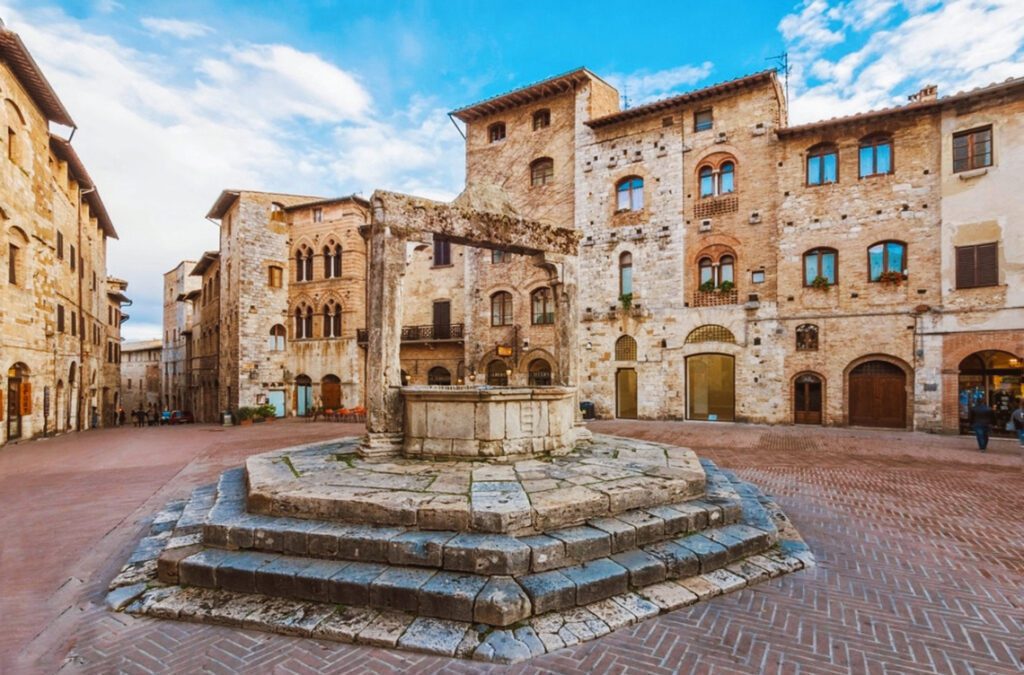
Turning around the cistern, you could not help but notice the numerous medieval towers.
💡 Interesting to know:
The towers symbolized the importance of noble families. The taller and more imposing it was, the greater was the importance of the family.
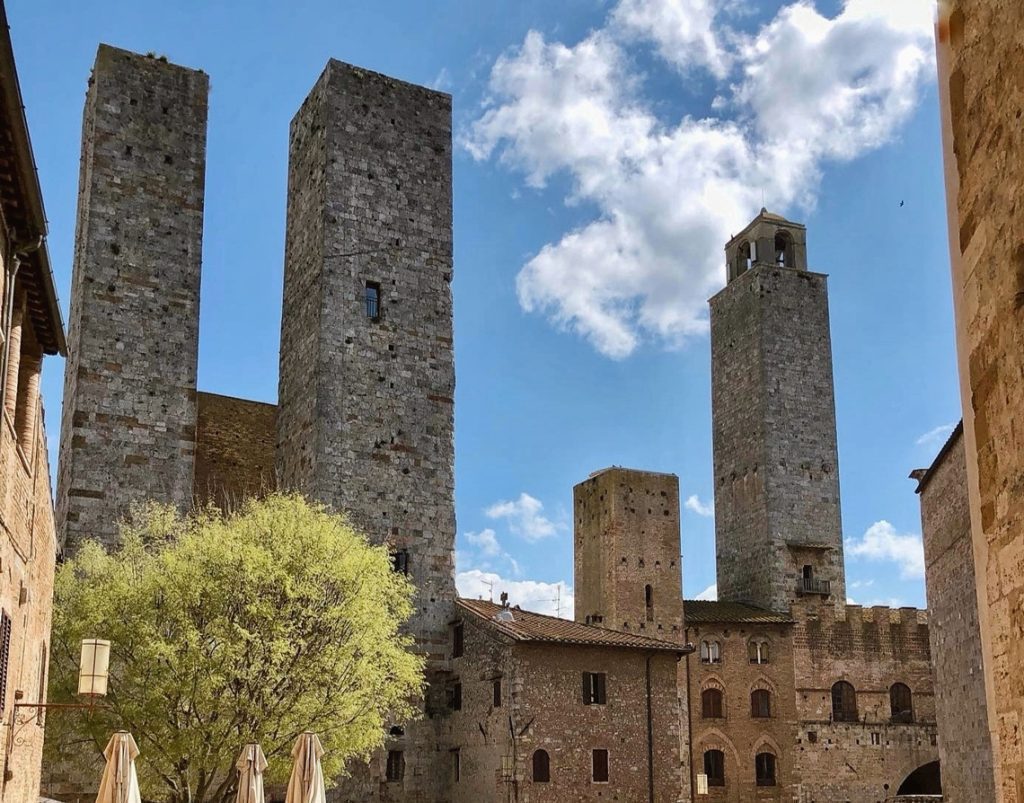
Among the highest you find the Tower of Becci and Cugnanesi, the Twin Towers of Ardinghelli, the Tower of Palazzo Pellari and the Devil’s Tower. The rather threatening name of the latter is linked to a legend according to which, the owner, upon returning from a journey, noticed that the tower was much higher than before, so it is thought that it was the Devil’s work.
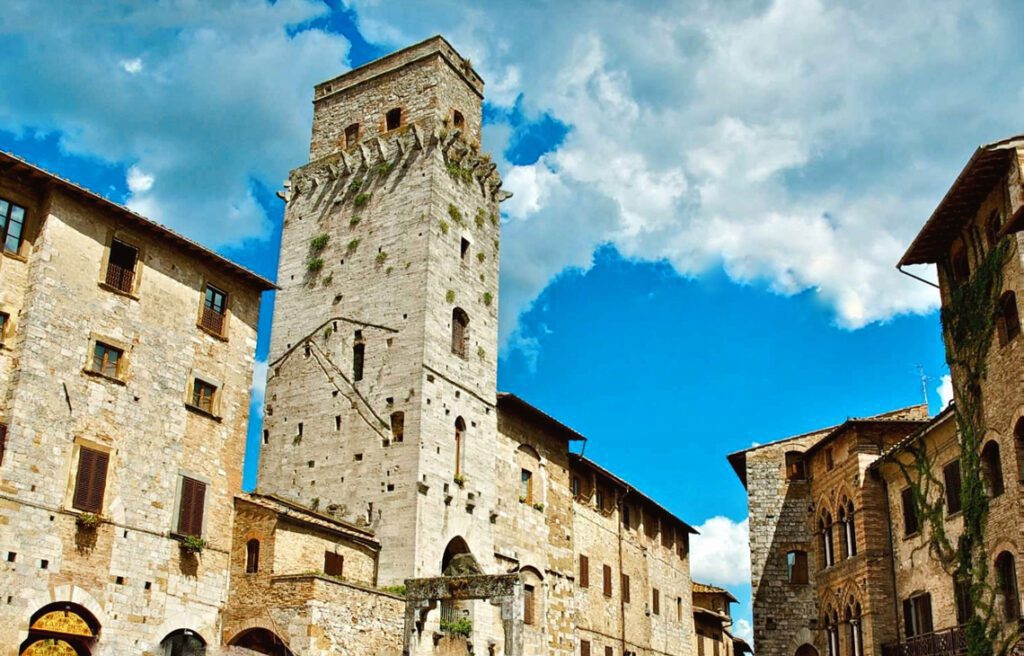
In addition to the numerous towers, some of the most important buildings overlook Piazza della Cisterna, among them Palazzo Razzi with its charming mullioned windows and Palazzo Tortoli flanked by a severed Tower.
Visit Piazza Duomo and the Collegiate Church of S. Maria Assunta
The Cathedral of San Gimignano built around 1056 and also called the Collegiate Church of Santa Maria Assunta is the main religious building of the village. It may look humble from the outside but you cannot imagine how many wonderful treasures and marvels it conceals.
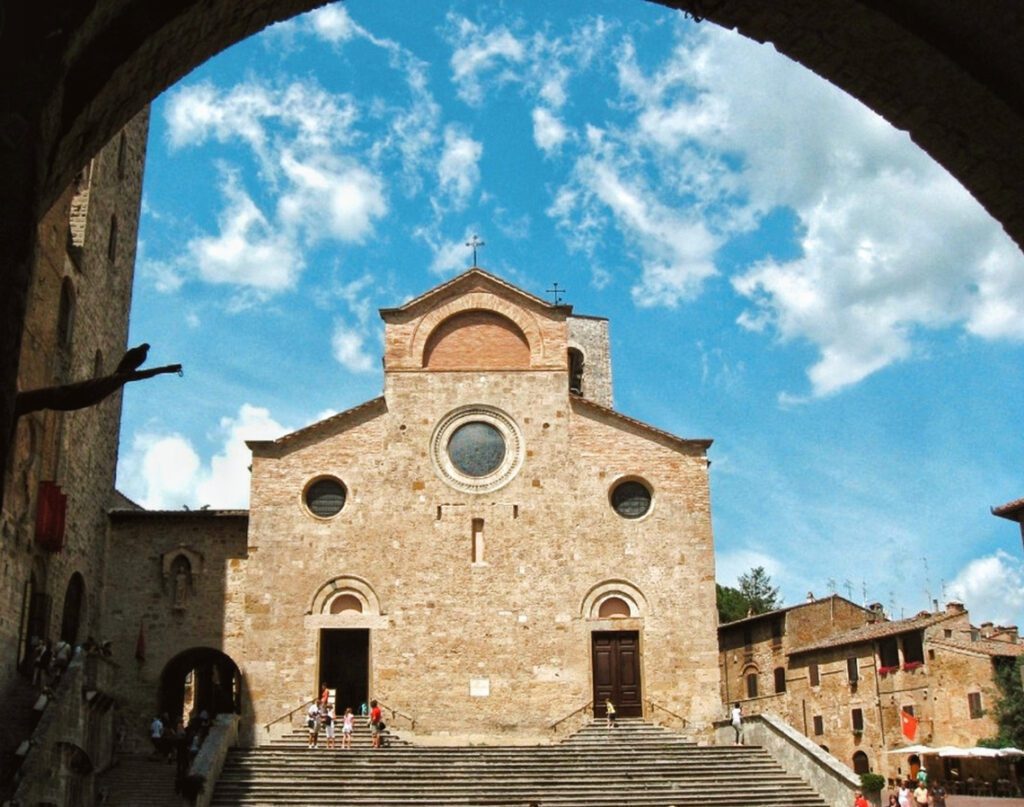
Inside Duomo you’ll be able to observe numerous masterpieces covering every square meter of the church made by famous artists such as Ghirlandaio, Benozzo Gozzoli, Mainardi, Taddeo di Bartolo and others.
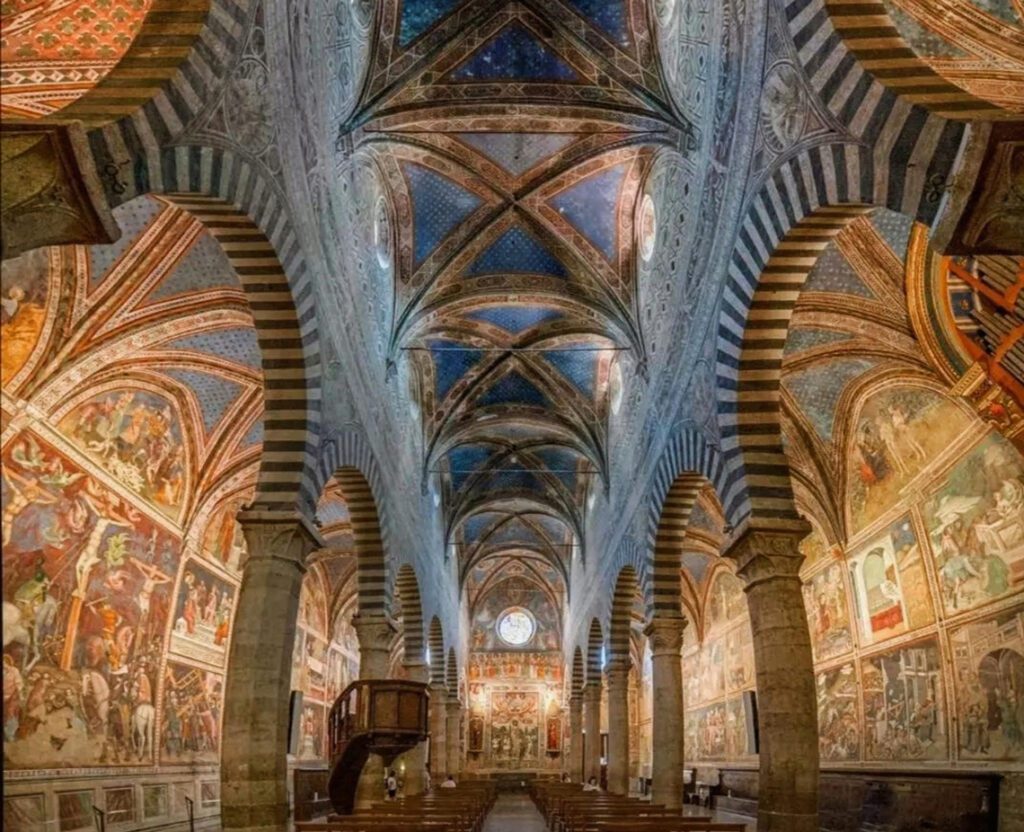
The interior hides colourful typical decorations of the medieval period and the jewel of the Renaissance – the Chapel of Santa Fina – made by Florintine artists Giuliano da Maiano, Benedetto da Maiano and Domenico Ghirlandaio.
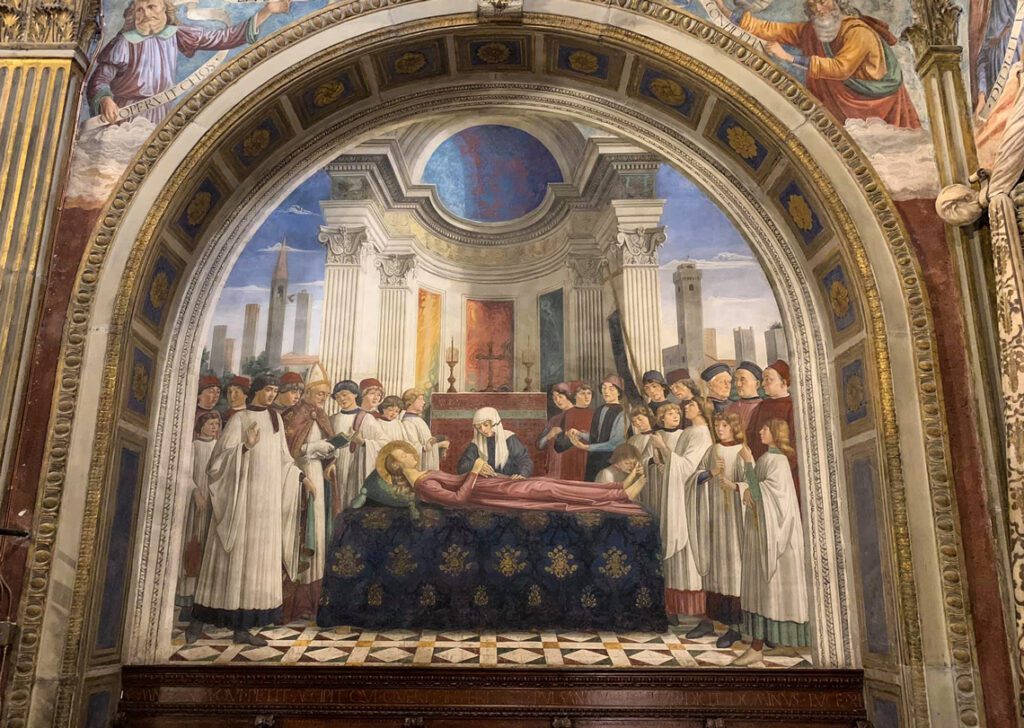
Numerous buildings overlook Piazza Duomo: the Palazzo Vecchio del Podestà (the old palace) with the Rognosa Tower. On the north side there are the twin towers of the Salvucci and on the south, the Palazzo Nuovo del Podestà (the new palace), flanked by the Torre Grossa.
You have pratically just traveled back in time!
Working hours and tickets: the Collegiate is open from 10:00 to 19:30 (on Saturday closes at 17.30 and on Sunday opens at 12.30). The cost of admission is € 4.00.
Visit the Church of Sant’Agostino in San Gimignano
The Church of Sant’Agostino includes precious works of art: a ceiling frescoed by Mainardi, majolica tiled floor by Andrea della Robbia, the masterpiece “The Coronation of Mary” by Pollaiolo and the cycle of frescoes by Benozzo Gozzoli “Stories of the life of Saint Augustine” located in the choir chapel.
The entrance is free.
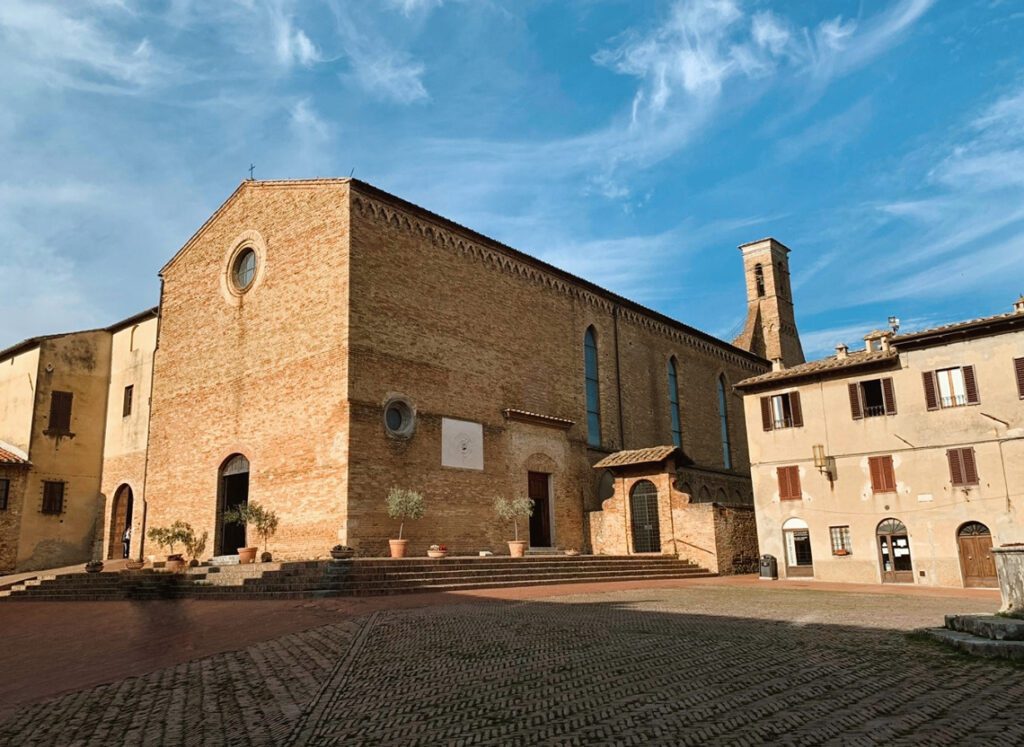
Visit the Torture museum
If you are looking for something a bit stronger and weird, then why not the unique Torture Museum in San Gimignano?
I wouldn’t recommend if you a very emotional but here you can find out all the cruel ways a man can be tortured.
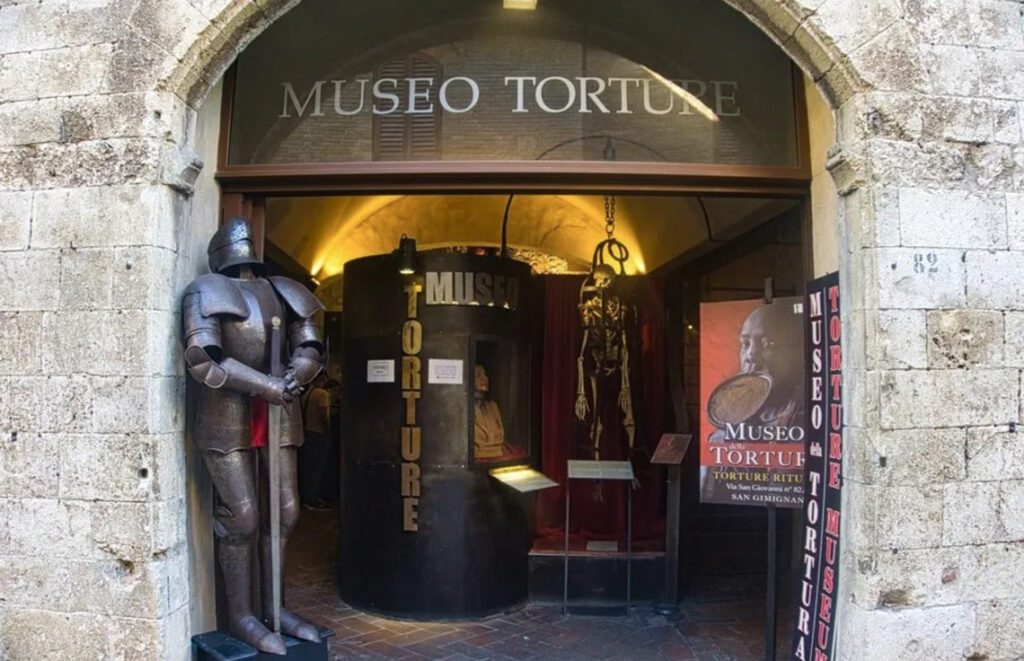
Crossed the Porta S. Giovanni, you will find the museum on your left. It is spread over three floors and reveals terrifying methods of torture with more than 100 original torture tools and other macabre objects. Among the most disturbing are the Guillotine, the Stretching Bench, the Inquisitorial Chair, the Piper of the Baccanaro, the Chastity Belt.
One of the scariest museums in Italy is open every day from 10:00 to 18:30, ticket cost € 12.00.
Climb to the top of Torre Grossa
This is the highest tower in San Gimignano (Torre Grossa literally means big tower) and is located in Piazza del Duomo next to the palazzo of the new Podestà (Palazzo Comunale). Built in honour of the visit of Dante Alighieri to the village in 1311, is 54 meters high and it’s the only one, together with The Twin Towers in Piazza delle Erbe, on which public access has been bestowed. The tower stands on a vaulted passage and has, like all other towers, a square base. The view of the Val d’Elsa from the top is spectacular, on the top of the tower there is a belfry, surrounded by a walkway protected by a parapet lying against hanging arches.
Official website
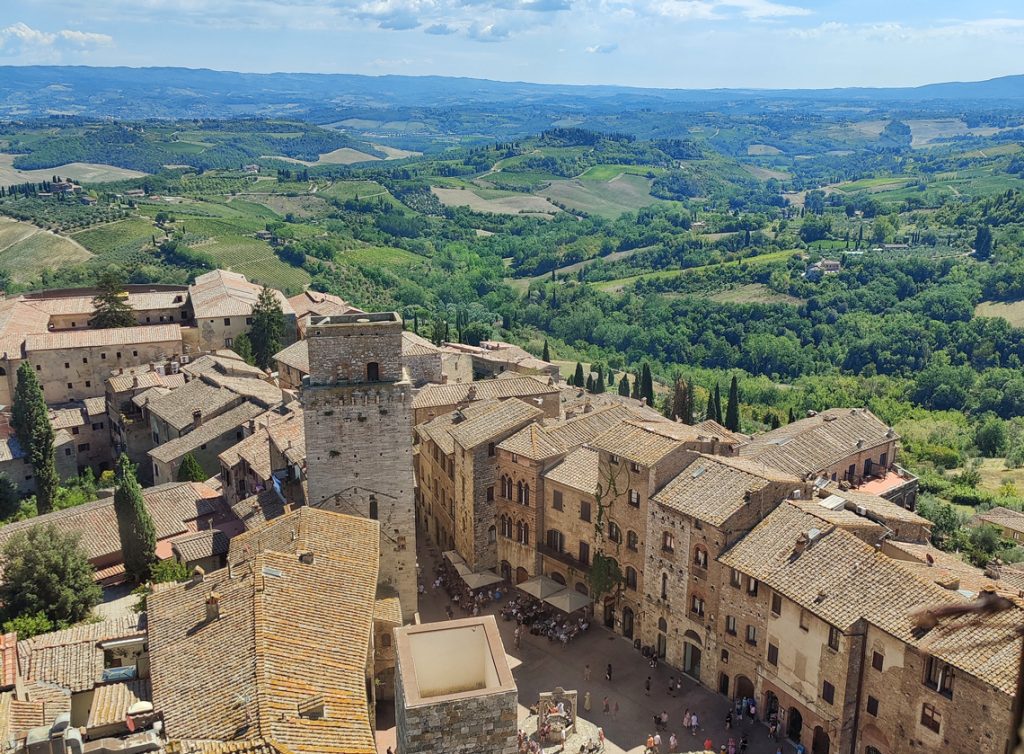
The museum of Vernaccia wine
The museum of Vernaccia has been realized with the collaboration of the Consortium of the San Gimignano Denomination and the association Strada del Vino Vernaccia di San Gimignano.
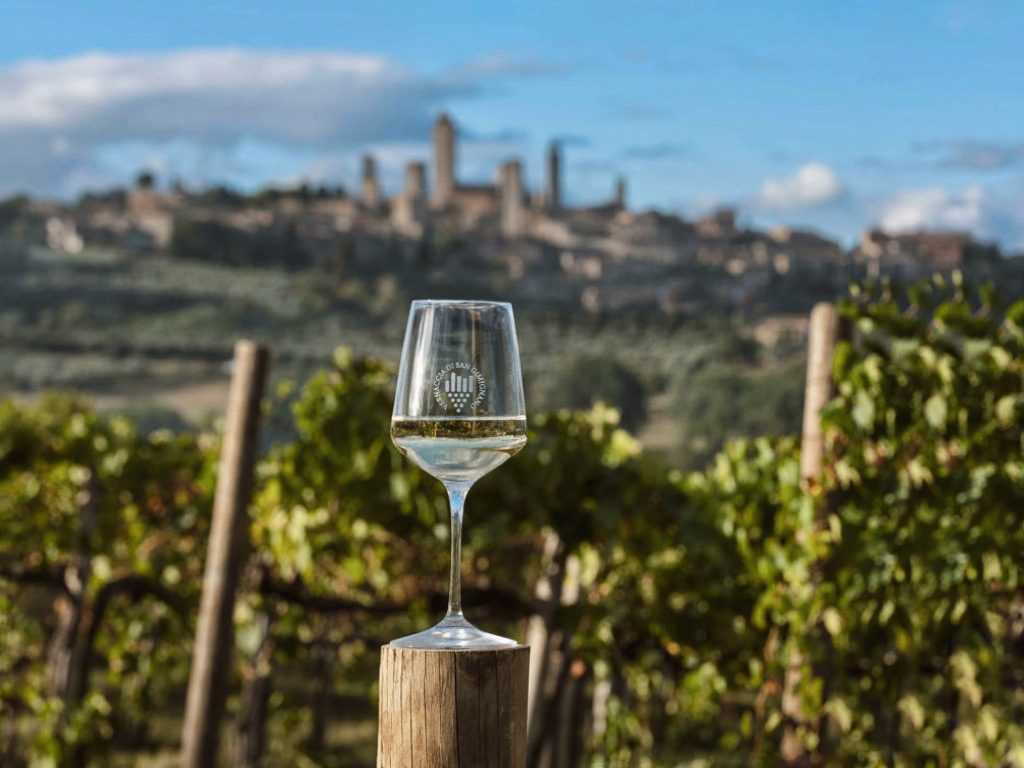
The Museum is located at the Villa della Rocca of Montestaffoli, an ancient residence leaning against the walls of the old Medici fortress, located in a panoramic position at the highest and most evocative point of the city, from which the roofs and the surrounding countryside dominate.
The museum seeks to document the visitor on the world of wine, with particular regard to what it is and that has represented over the centuries Vernaccia di San Gimignano.
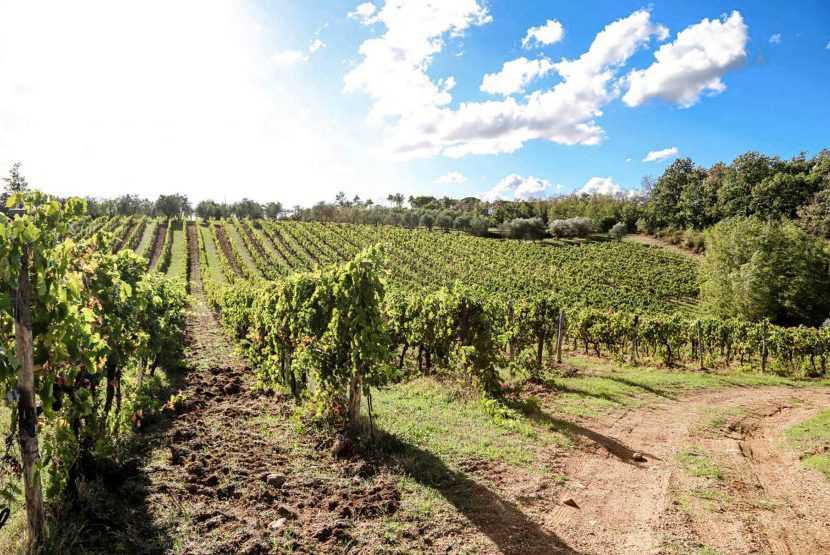
The story of wine is traced through a sensory and cultural journey. A highlight is definitely the tasting room where you can taste 16 different labels of Vernaccia, typical wine of San Gimignano.
E-mail: larocca@vernaccia.it
💡 Note:
If you plan to visit the main sights of San Gimignano it’s worth buiyng the €13 City Pass valid for two days that covers Duomo, Torre Grossa, Palazzo del Popolo (Comunale) and Pinacoteca as well as Museo Archaeologio, Speziera di Santa Fina and the Church of San Lorenzo in Ponte.
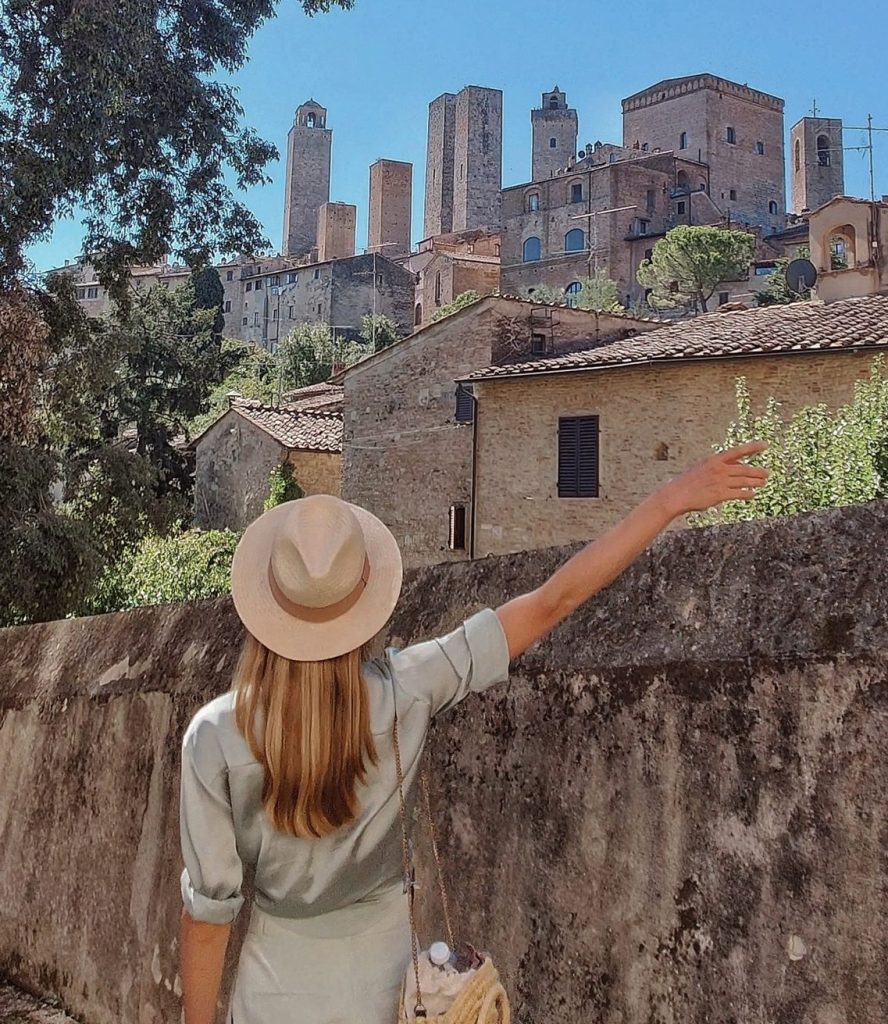
What to taste in San Gimignano
Ice cream
San Gimignano is also famous as the village with the best ice cream in the world. Right in the central Piazza della Cisterna you will find Gelateria Dondoli with the best and most creative gelato in the region. From 2006 to 2009 this ice cream shop won the Ice Cream World Cup. You will find a wide selection to suit all tastes, for example, the Santa Fina cream with saffron and pine nuts, the Champelmo with pink grapefruit and sparkling wine, the Dolceamaro with aromatic herbs cream and finally the Vernaccia sorbet. There is always a long queue but it goes fast! 😉
Official website
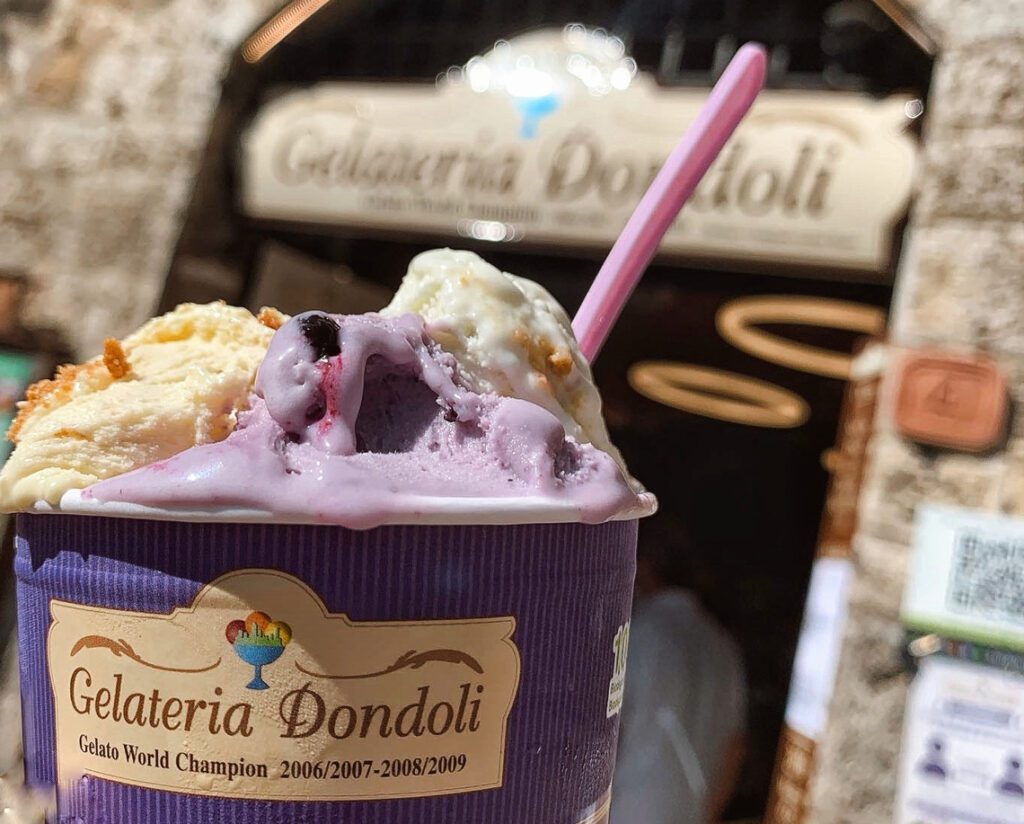
The typical wine La Vernaccia
Obviously you have to taste the typical wine of the village – Vernaccia – because is the only Tuscan white wine boasting the DOCG label (Controlled and Guaranteed Designation of Origin). An excellent wine to traditional dishes or aperitif.
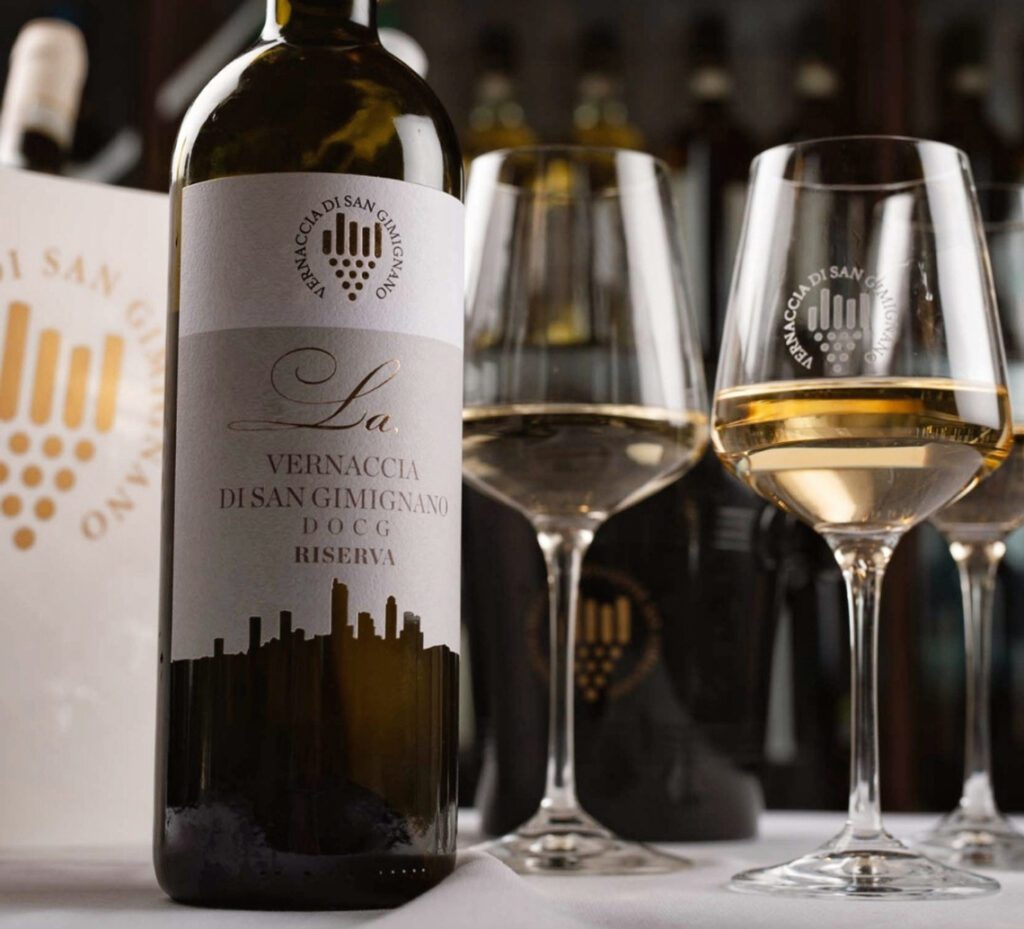
Saffron
It is a spice with intense yellow color native to the Middle East, arrived in Tuscany in 1200. Back then, it was used as an exchange product instead of money. It has antioxidant and homeopathic properties and is used as an ingredient in some typical dishes. In fact, this spice is added in Panino del Casentino (a sweet Easter bread) or in pici, a type of pasta typical of Tuscany, similar to spaghetti but a bit larger, with sausage sauce.
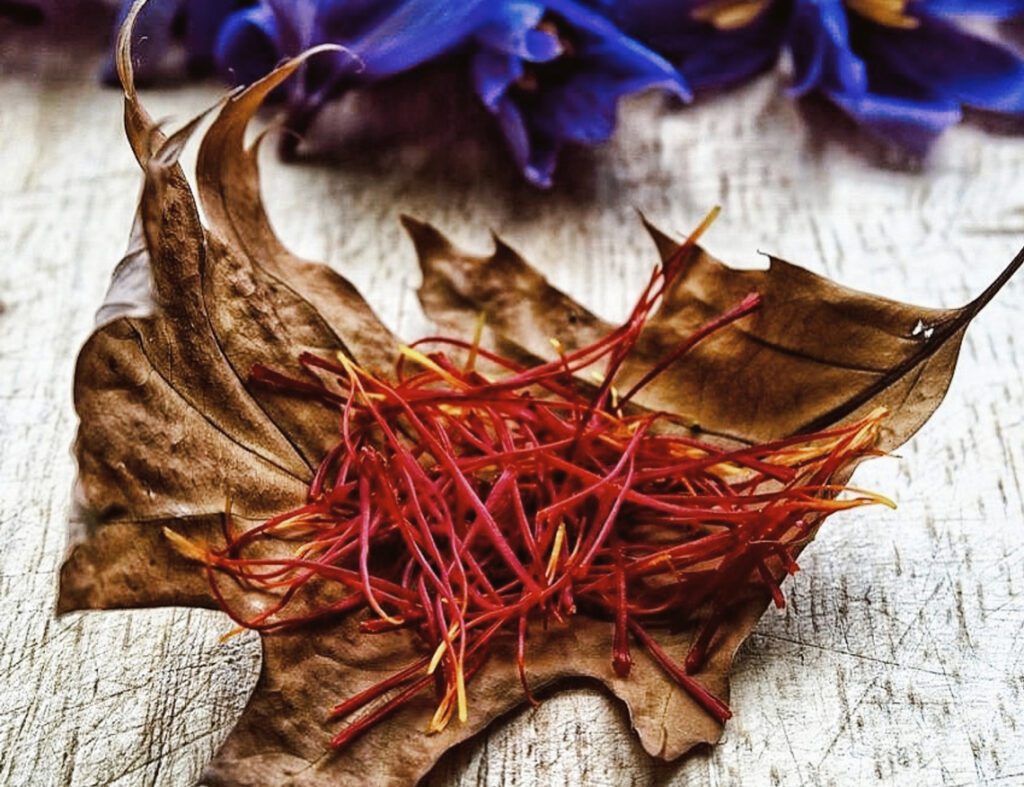
Soppressata toscana
A Tuscan starter made with parts of the pork’s head.
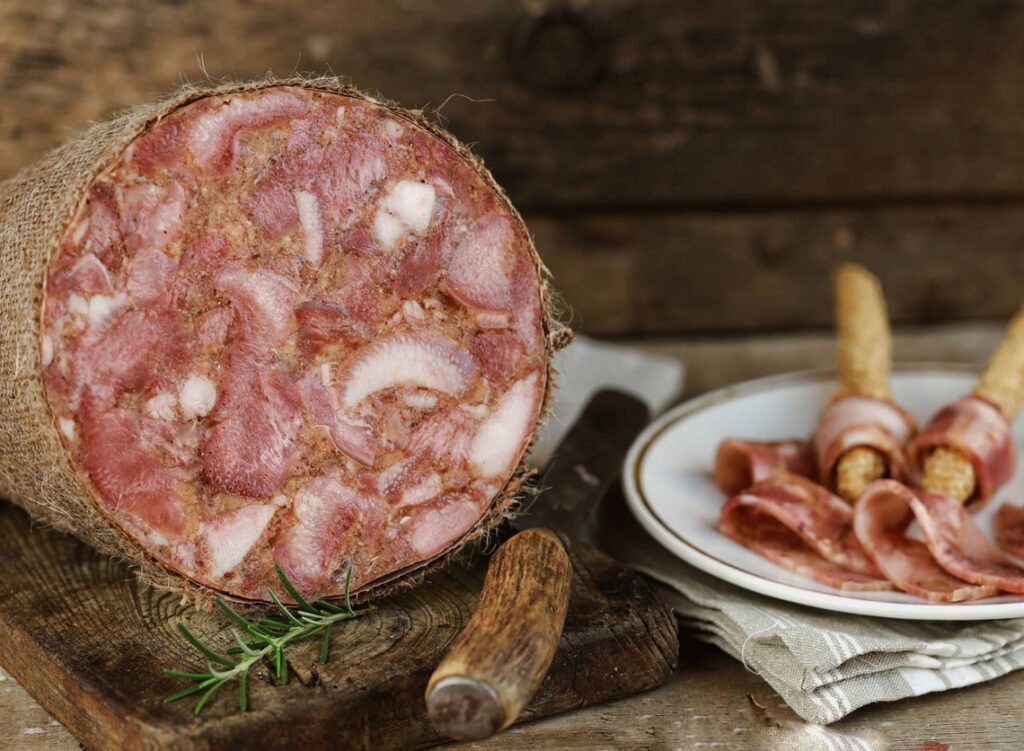
Finocchiona
A typical Tuscan sausage prepared with minced pork and flavored with fennel seeds, then wet with red wine.
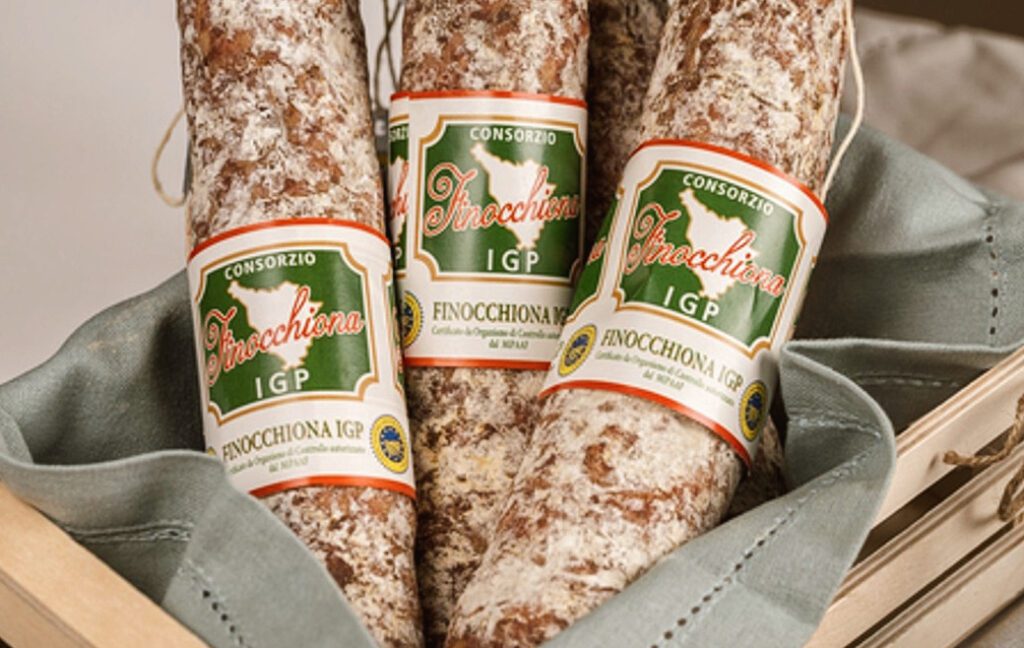
Villages to visit nearby San Gimignano
San Gimignano is often chosen as a base to move around and discover all the artistic wonders and landscapes of Tuscan hinterland. From there you can reach other beautiful villages: the particular Monteriggioni and the scenery Certaldo both just 25 minutes away, Volterra and its vampires located 40 minutes of distance and San Miniato at an hour’s drive.
I advise you not to miss them 😉
